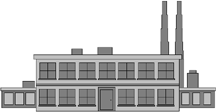Things to Think About:
|
| Misericordia University | TED 121 -- Educational Technology |
What is Educational Technology?
Technology is a rational discipline to assure mastery of humankind over physical nature, through processes, systems, management and control mechanisms, both human and nonhuman. In other words, it is the application of scientific knowledge to solve problems.
Educational technology is the application of scientific knowledge about human learning to the practical tasks of teaching and learning (Heinich, Molenda, & Russel, 1993). In other words, it is the application of scientific knowledge (strategies and techniques) to solve instructional problems. It is an attempt to bring about more effective instruction, based upon a systematic way of designing, carrying out, and evaluating the process of teaching and learning, based upon research in learning and communication.
Aspects of the Definition of Educational Technology (Hackbarth, 1996)
Brief History of Educational Technology
Educational technology really began in the middle 1400's with the invention of the movable type printing press. According to Hackbarth (1996), the history of the use of educational technology can be divided into four major eras. They are described below:
Things to Think About:
|
Rationale for Using Educational Technology
Educational technology seems like a "natural" to use in education. But are there any real advantages to using educational technology in instruction? Should teachers use educational technology in their classes? Why or why not?
 |
In small groups, we will now take a brief look at some educational software. As you preview the software, write down a list of advantages of using technology (multimedia) in teaching/learning. Don't be afraid to write down your "gut" feelings. As you work, answering some of the following questions may be helpful to you:
When you are done, click the following button to see some advantages to using multimedia in education: |
Technology and Changes in Traditional Classroom Structure
Many traditional elements found in the modern classroom were established in the late 1800's and early 1900's. Schools were greatly influenced by factories. Today, with the greater influence of technology in education, the traditional classroom is being challenged.
Compare the following two images. Notice the similarities between the factory and the school. Do you know of any schools today that still look like factories? Are you maybe the product of one?
 Factory of the early 1900's |
 School of the early 1900's |
Hot Topics in Educational Technology
Technology is an important topic in education today. The public is demanding more and more use of technology in schools. Many political officials run for office on a platform of improving technology in education. The use of various technologies is cutting edge, and some technologies are still undergoing experimentation as to how they should be implemented. Proper use of some technologies is even controversial! Thus, there are many hotly debated and discussed topics in technology today.
 |
The following are online professional journals where you can locate some "hot" topics in educational technology. Select one or two links, and briefly scan the table of contents and any articles of interest. List several hot topics in educational technology today.
|
Information Literacy
Information literacy is an important hot topic as we make further progress into the information age. It is debated in the political arena, and it is a concern for schools.
 |
The following link deals with the issue of information literacy. Review the resource and try to answer the following questions:
|
An increasingly important component of information literacy is artificial intelligence (AI). AI literacy includes the skills to understand, evaluate, and utilize AI systems. Citizens need to learn how to use AI-generated content effectively and responsibly. AI provides both opportunities and challenges.Artificial Intelligence as a Component of Information Literacy
| JUMP TO ANOTHER TOPIC IN MODULE 1: |
| Overview of the course. |
| Introduction to educational technology. |
 Module 1. |
 Topics. |
TED 121 |
Dr. Steve |